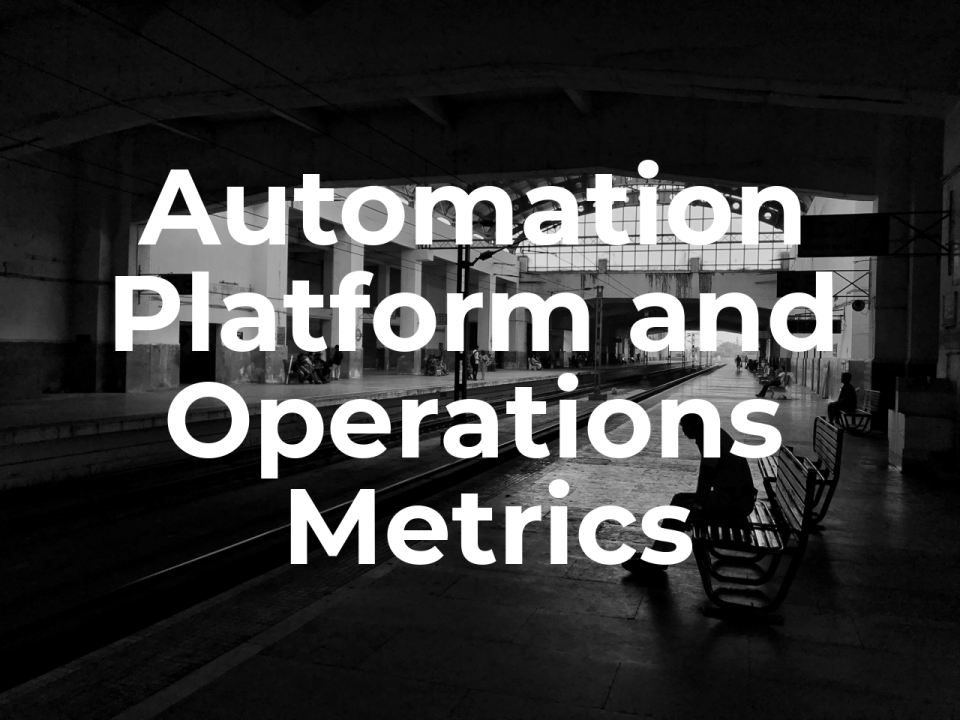Platform and Process Metrics you can use to judge the success of your automation program
There are a great many hidden costs of automation. Approximately 30% of the cost of automating a process is tied to the licensing costs of software. A staggering 70% is made up of services, infrastructure, hiring developers, COE expenses, etc. If organizations can maximize the value of their bots, while simultaneously running their operations as effectively as possible, then they stand a far greater chance of delivering business success.
So far we have outlined the Finance, Business and Operational metrics that you need to consider to judge the success of your automation program. Today we address metrics to help the management of the bots themselves.
The many hidden costs to an automation program and therefore managing Platform and Operations metrics is key.
Platform Metrics:
1. Robot Processing Time. Bots should be considered as digital workforce with the potential to work 24/7, so it is important that this ability should be utilized optimally. The more hours a bots process transactions the more value you can deliver.
Measure: BOT processing time (hr.) / BOT availability (hr.) Manish Rawat, Intelligent Automation Technical Manager
2. Robot AHT (optimization of process steps built into a robot). The average handling time it takes a robot to process a transaction compared to a person. Digital workers are 3 to 5 times faster than a person. Average handling time of a process should reduce significantly when robots are used.
3. Robot uptime. Bots should be available and working 24/7. In reality, due to backups, downtime to patch and fix platforms etc. this is more like 20/7. That is 3 shifts of 100% robot time and attention processing transactions. No breaks. No reduction in effort. No sickness. The more hours the bots spend working the more benefits an automation program can deliver.
“If savings are not being achieved in terms of monetary measurements, efficiencies, or a better customer experience, then what is the benefit of automation?”
Dermot Carroll – Technical Lead, Virtual-Operations
4. License Utilization: No one would claim to have a successful business if they hired 50 people and did not maximize their profitable utilization. For a long time, vendors and analysts alike believed that 50 robots equalled automation success often regardless of determining the value delivered by bots. Licenses can cost a lot of money e.g. $2k, $6k and $10k each. Therefore, licenses need to be fully utilized in the pursuit of business benefit.
5. Platform Availability. Known downtime. Businesses make money and drive benefit when their robots are utilized to the max. Automation platforms need to be treated like enterprise platforms, with 24/7 or 9999s uptime expected if firms want the maximum output from their digital workforce.
6. Service Desk Tickets. When bots break they can’t and don’t process transactions. Usually the business will log a ticket. The more tickets logged with the COE service desk, the more indicative of the fragile nature of the technology environment, the data ingested and processed or the bot coding. Whilst less tickets done necessarily equal a successful program; more tickets generally indicate a broken environment of some sort that is less efficient and less optimal than maybe required.
“A CoE with a clear vision and mandate are essential for automation to be delivered at scale and successfully across an enterprise”
Faisal Iftikhar, VP and Global Head of Automation
Process metrics:
7. Business exception before and after automation. Bots do what they are programmed to do. Noting more and nothing less. Routine, repetitive processes that require a high attention to detail are easily handled by bots. Whereas humans may start to make mistakes after processing the same transaction over and over again bots, if programmed correctly, don’t. In such instances, process instructions and process accuracy are more likely, business exceptions less likely when bots are used in those instances.
8. Process Cycle time reduction. Bots are 3-15 times faster than a person at processing computer transaction. Therefore, firms should expect to process digital transaction much faster if they employ bots not humans.
We can gauge the increase in speed of operations that a bot brings which will drive Customer Satisfaction. Measure: Average transaction time (post-RPA) / Average transaction time (pre-RPA) Manish Rawat, Intelligent Automation Technical Manager
9. Process SLA Breaches. Bots are often used in processes that have strict SLAs. For example, the energy industry in the UK must meet customer complaints response times or face fines. Where bots are used in such processes, the number of process breeches should reduce compared when humans were employed to complete this task.
10. Number of processes being managed by automation team. The more processes a firm can automate the better.
11. New processes delivered in X timescale: The more processes delivered, that add business benefit, in the shortest period of time possible can indicate a healthy pipeline and automation program.
12. Processes Decommissioned (DWs Released): Organizations can run the risk of managing and updating orphan processes that are not adding value to an organization if they are not careful. It is healthy to decommission processes over time to free licenses and development staff to focus on more value-add processes.
13. Volume Deviation: After BOT utilization this metric suggest the difference in the forecasted volumes used for ROI calculations and the actual volumes received by the Bots. Measure: Actual Transaction Volume / Forecasted Transaction Volumes Manish Rawat, Intelligent Automation Technical Manager
Business cases can be quickly built, promises of ROI easily made and then more easily broken. Organisations need to keep a watchful eye on process ROI as created by the number of transactions flowing through a process v. the time it took for a person to do the same. Where these don’t match then process ROI needs examined.
Conclusion:
Vendor selection is often deemed important when considering an automation program. More important than ever, before picking vendors, is understanding the operational metrics pulse you want for your program. The range of metrics can vary and should reflect the support of the various functional strategies of your organization.
Metrics indicate the priorities of the company and provide a window on the performance and velocity of achieving your business objectives. By running operations as effectively as possible firms stand a far greater chance of delivering business success from their investments in automation technology.







Leave a Reply